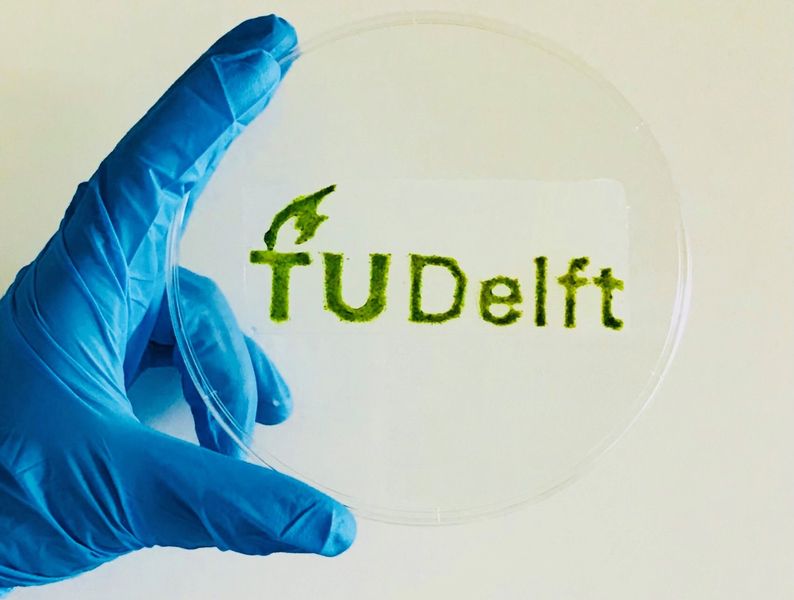
Researchers have done something no one has done before: 3D printing “living” leaves.
The researchers at TU Delft combined techniques to develop a hybrid living / non-living 3D print. The result is a “photosynthetic material”.
In normal bioprinting there’s usually two materials: one is a rigid material to build a scaffold, a solid structure that later dissolves. On top of the scaffold are deposited living cells, and the scaffold’s geometry “guides” the growth of the living cells as they multiply. When the scaffold eventually dissolves, this leaves the cells in the desired biological shape.
In this unusual experiment the TU Delft researchers used bacterial cellulose as the scaffold material. This is a non-living substance that provides rigidity.
For the “living cells” part of the equation, the researchers used microalgae.
What is the result of this unusual combination? They explain:
“The combination of living (microalgae) and nonliving (bacterial cellulose) components resulted in a unique material that has the photosynthetic quality of the algae and the robustness of the bacterial cellulose; the material is tough and resilient while also being eco-friendly, biodegradable, and simple and scalable to produce. The plant-like nature of the material means it can use photosynthesis to “feed” itself over periods of many weeks, and it is also able to be regenerated—a small sample of the material can be grown into more on-site.”
In a way, a 3D print from this material would act much like a leave: its a mostly 2D shape that transforms sunlight, water and CO2 into usable energy. TU Delft says one possible application is to convert the stored sugars into fuel.
However, it would also be possible to 3D print different types of sensors using this approach.
One of the more intriguing applications might be in space. It would be possible to produce “leaves” that could perform the work of plants to filter out CO2 in a spacecraft, or even provide nutrients or other eco-friendly materials.
Anywhere it is challenging to grow natural plants could potentially be a good environment for use of this new technology.
But even that could be limiting the potential of the technology. TU Delft’s Elvin Karana explains:
“What if our everyday products were alive: could sense, grow, adapt, and eventually die? This unique collaborative project shows that this question is beyond the realm of speculative design. We hope our article will spark new conversations between design and science communities and inspire new directions for investigations for future photosynthetic living materials.”
Via TU Delft
